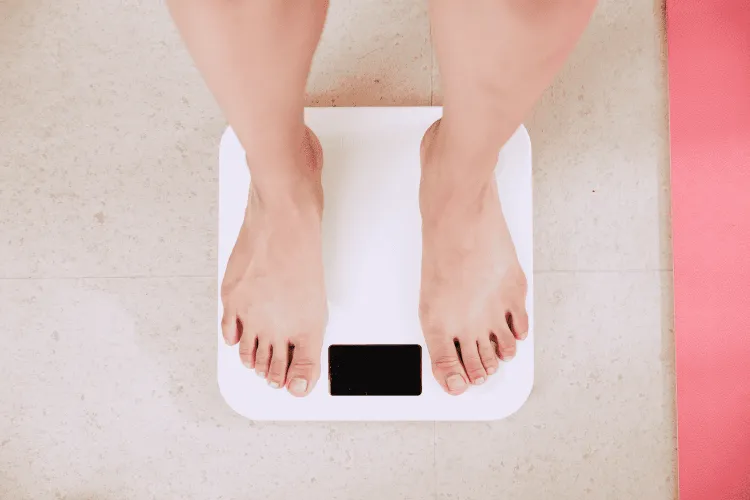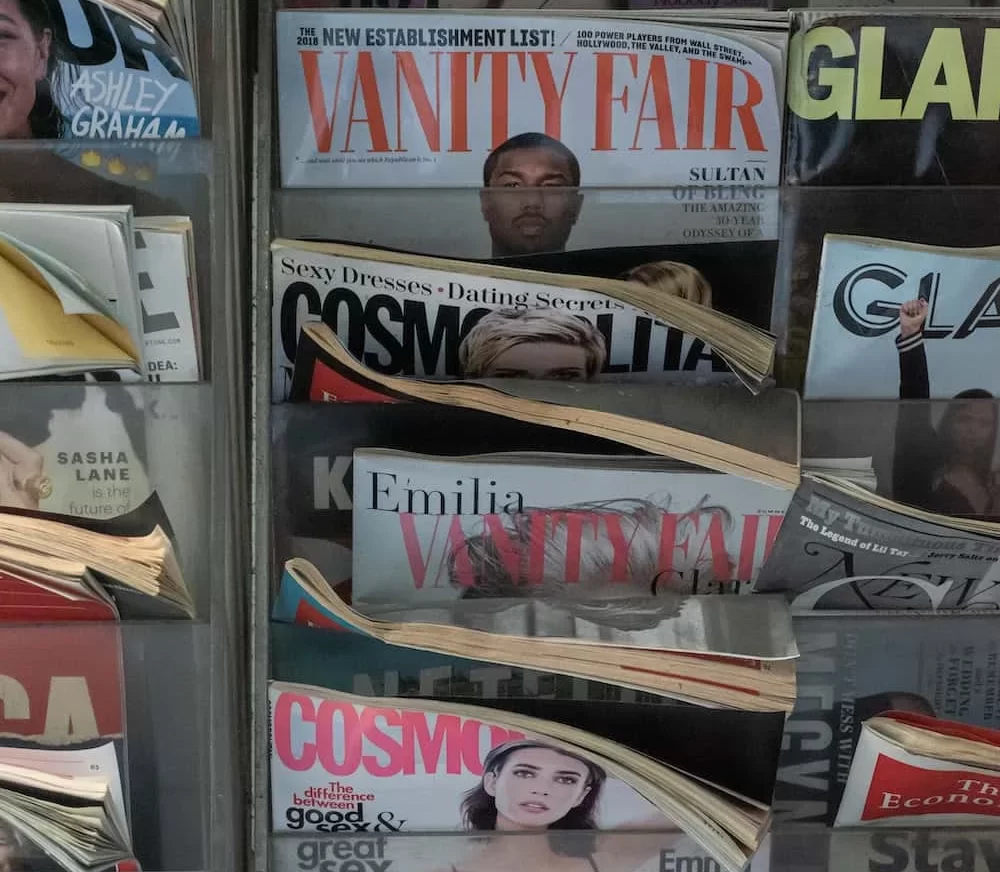Nearly everyone has an issue with weight
Usually at some time in their life

After learning about the impact of media and Photoshop on self-esteem, I made a firm decision. When we opened our hair shop, we would never display magazines that contributed to negative body image.
My motivation was simple yet profound. I never wanted anyone else to experience the pressures and insecurities I had felt about my appearance. I had struggled with body image issues and had battled with eating disorders, and I knew firsthand the damaging effects of societal standards of perfection.
Clients came to our salon not just to look good but to feel good about themselves. Yet, many magazines portrayed unrealistic ideals of beauty that no amount of hairstyling or makeup could achieve. Despite my efforts to work magic with their hair, these images could leave clients feeling inadequate rather than uplifted.
My goal was clear: I wanted every person who walked out of our salon to feel amazing, inside and out. I aimed to create an environment where self-confidence and self-acceptance were nurtured, free from the pressures imposed by unrealistic beauty standards.
In choosing not to display those magazines, I hoped to contribute positively to my clients’ well-being, fostering a space where they could embrace their uniqueness and feel genuinely good about themselves.
Take away
What is perfect?

“What is perfect?” It’s a question many of us grapple with, especially in a world where media shapes our perceptions of beauty and success. Magazines, newspapers, news broadcasts, and films often portray images and stories that seem flawless and idealised. But are these representations truly perfect?
Have you ever encountered a perfect person? I certainly haven’t. If you have, I’d love to meet them because I’m still waiting to meet someone who fits that description.
The truth is, perfection is subjective and elusive. When we scrutinise the images of models and celebrities in magazines, it’s important to remember that what we see is often heavily edited and curated. These individuals may not resemble their magazine photos in real life.
Take Elle MacPherson, for example. When I saw her in person, she was undoubtedly beautiful, but naturally and authentically. She wasn’t adorned with layers of makeup or artificial enhancements. Like most people, she had spots and blemishes—imperfections that make us human.
The quest for perfection in appearance can be damaging, leading to unrealistic expectations and dissatisfaction with ourselves. It’s crucial to challenge these ideals and embrace diversity and authenticity instead.
True beauty lies in our uniqueness and our ability to be genuine. Let’s celebrate our imperfections as part of what makes us who we are. By questioning societal standards of perfection and embracing our natural selves, we can redefine what it means to be truly beautiful.
So, next time you see an image in a magazine or on screen, remember that perfection is an illusion. Let’s strive for authenticity and self-acceptance instead.
Recommended Reading
-
A book about eating good food: You Are What You Eat: The Plan That Will Change Your Life
-
A book about the history of food: The Secret History of Food
-
A science book about food: Essentials of Food Science
-
A book about intuitive eating: The Intuitive Eating Workbook: Ten Principles for Nourishing a Healthy Relationship with Food
-
A book about harmful chemicals and food additives: Toxic Free Diet: Learn How to Reduce Toxic Stress, Foods and Chemicals That Are Making You Fat, Sick and Tired
-
A book for helping parents and caregivers: The Dialectical Behavior Therapy Skills Workbook for Bulimia
-
A book for supporting teens with eating disorders: When Your Teen Has an Eating Disorder: Practical Strategies to Help Your Teen Recover from Anorexia, Bulimia, and Binge Eating
-
A book for inner healing: Recovery of Your Inner Child: The Highly Acclaimed Method for Liberating Your Inner Self
Magazines

After learning about the impact of media and Photoshop on self-esteem, I made a firm decision. When we opened our hair shop, we would never display magazines that contributed to negative body image.
My motivation was simple yet profound. I never wanted anyone else to experience the pressures and insecurities I had felt about my appearance. I had struggled with body image issues and had battled with eating disorders, and I knew firsthand the damaging effects of societal standards of perfection.
Clients came to our salon not just to look good but to feel good about themselves. Yet, many magazines portrayed unrealistic ideals of beauty that no amount of hairstyling or makeup could achieve. Despite my efforts to work magic with their hair, these images could leave clients feeling inadequate rather than uplifted.
My goal was clear: I wanted every person who walked out of our salon to feel amazing, inside and out. I aimed to create an environment where self-confidence and self-acceptance were nurtured, free from the pressures imposed by unrealistic beauty standards.
In choosing not to display those magazines, I hoped to contribute positively to my clients’ well-being, fostering a space where they could embrace their uniqueness and feel genuinely good about themselves.
Take away
What is perfect?

“What is perfect?” It’s a question many of us grapple with, especially in a world where media shapes our perceptions of beauty and success. Magazines, newspapers, news broadcasts, and films often portray images and stories that seem flawless and idealised. But are these representations truly perfect?
Have you ever encountered a perfect person? I certainly haven’t. If you have, I’d love to meet them because I’m still waiting to meet someone who fits that description.
The truth is, perfection is subjective and elusive. When we scrutinise the images of models and celebrities in magazines, it’s important to remember that what we see is often heavily edited and curated. These individuals may not resemble their magazine photos in real life.
Take Elle MacPherson, for example. When I saw her in person, she was undoubtedly beautiful, but naturally and authentically. She wasn’t adorned with layers of makeup or artificial enhancements. Like most people, she had spots and blemishes—imperfections that make us human.
The quest for perfection in appearance can be damaging, leading to unrealistic expectations and dissatisfaction with ourselves. It’s crucial to challenge these ideals and embrace diversity and authenticity instead.
True beauty lies in our uniqueness and our ability to be genuine. Let’s celebrate our imperfections as part of what makes us who we are. By questioning societal standards of perfection and embracing our natural selves, we can redefine what it means to be truly beautiful.
So, next time you see an image in a magazine or on screen, remember that perfection is an illusion. Let’s strive for authenticity and self-acceptance instead.
Recommended Reading
-
A book about eating good food: You Are What You Eat: The Plan That Will Change Your Life
-
A book about the history of food: The Secret History of Food
-
A science book about food: Essentials of Food Science
-
A book about intuitive eating: The Intuitive Eating Workbook: Ten Principles for Nourishing a Healthy Relationship with Food
-
A book about harmful chemicals and food additives: Toxic Free Diet: Learn How to Reduce Toxic Stress, Foods and Chemicals That Are Making You Fat, Sick and Tired
-
A book for helping parents and caregivers: The Dialectical Behavior Therapy Skills Workbook for Bulimia
-
A book for supporting teens with eating disorders: When Your Teen Has an Eating Disorder: Practical Strategies to Help Your Teen Recover from Anorexia, Bulimia, and Binge Eating
-
A book for inner healing: Recovery of Your Inner Child: The Highly Acclaimed Method for Liberating Your Inner Self









